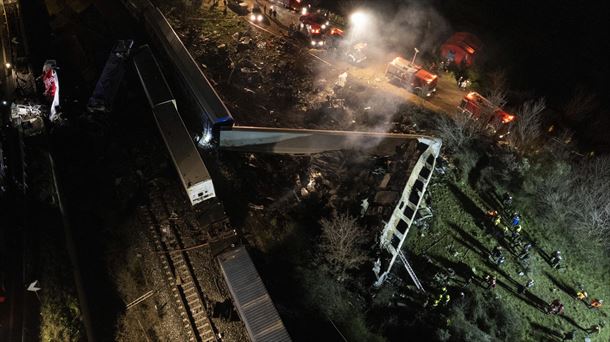“He died after a long battle with cancer”, “he defeated the disease”, “he could not defeat …”. The language of war has taken root in everything, including when the media talks about cancer. It is divided into winners and losers. Medication is treated as if it were a war against a patient’s illness. In the search for euphemisms to avoid encountering reality, terms have been found that are harmful. Overcoming disease is neither a matter of courage nor a strategy of war.
Against this “toxic language” of the media, there are strong photos of Pepe Guinea depicting his journey after he was diagnosed with a malignant brain tumor. The days of chemotherapy and radiotherapy, the days of his hospital stay or his surgery are recorded through the daily items he saw from the hospital bed. A box of pills that evokes optimism, a scar, legs that can not be lifted, orange peel, which is the food of the day … a photo tour that you can see at its exhibition. The right distance, Which was on display at Fujifilm’s room at EFTI (Madrid) until 1 May and which won the Albarracín DKV Scholarship, directed by the prestigious photojournalist Gervasio Sanchez.
Pepe Guinea says that when they were told he had cancer, he ran to the internet to look for “some evidence from a man who has successfully overcome” the disease. There was none. It was a shock against the most brutal reality. Even those who wrote about it died years later. “It was very difficult and it made me think of people like me who have tumors that can’t be removed and that can return to activity at some point. What we have is the survival time, what we say when we go for a consultation,” said the photographer.
Unconsciously, he started filming what was around him. “So I did not have a goal and realize that this disease was what I was going to fight with photography. The more limited I was, the more I was left with the opportunity to capture my world and that is what I could dedicate. “More than taking a picture of the disease, I think my photos show more of my process with the disease, my journey when I found myself in this situation with a brain tumor,” adds Pepe Guinea.
Through these aseptic photos, without sensationalism and drama, this language full of war euphemisms is completely eliminated. Guinea admits that many times when reading the article, it does not like “treating the sick like warriors fighting a terrible disease.” “We are all with a disease that no one wants and we want the resources to be available to us to make it easier and easier for us to get through,” he says strongly, referring to these terms. That he describes as “very toxic language.” “These are the processes we have to go through and death is for everyone and at some point it comes, and it is madness that a person who lives a year, six months, or five years, gets sick at that time. “It’s very ugly to me to be considered a loser,” he said.
The idea of perceiving his reality through the everyday objects that surround him arose through physical imposition, and that is that his life was condensed into a very small space. It was difficult to move, anxious, weak … It took on another dimension around that moment. “They were my landscape and it was important for me to bring beauty out of situations that are not usually so beautiful. It is a very difficult time and it helped me to overcome them, to discover the beauty that can exist in simple situations. He.
Despite the harshness of the images, it is possible to feel the mental state of Pepe Guinea in each of them. The optimism of the pills with his treatment contrasts with the coldness of his room. His photos capture his vital moment: “These objects are a means of self-expression, so yes, the state of my mind is very relevant. The coldness of some images is related to the coldness I had to face to maintain this condition. “I was separated from my emotions so that I could not hide. I needed to cool down to deal with this situation.”
This exhibition is not just about objects: the photographer himself exposes himself and shows his scar, a tired face on the bed. It was clear to him that he had to do it. “Modesty entered the equation to disappear. I was already ashamed that I felt so fragile and there was a moment when, in order to gain lightness, it was positive for me to give her visibility, to share with others, to show my body. “What was happening to me. It freed me, I could feel liberated. I was also free from my embarrassment. For me, what I did with photography at that time was a very therapeutic way,” he said. “Where loneliness has always been.”
Jean-Luc Godard said the stalking blow was a moral issue. The choice of camera movement hides more than just an aesthetic decision. This can be seen in the photos of Guinea admitting to thinking about it: “My ethical approach was not to dramatize my photography. I did not want to be a victim of myself in the pictures. I did not want to say that I was suffering too much. “And what is even written in the title of the exhibition. Show what he experienced from the victim and without drama.”
Source: El Diario
I’m an experienced news author and editor based in New York City. I specialize in covering healthcare news stories for Today Times Live, helping to keep readers informed on the latest developments related to the industry. I have a deep understanding of medical topics, including emerging treatments and drugs, the changing laws that regulate healthcare providers, and other matters that affect public health.



